#West Coast Transients (Biggs)
Explore tagged Tumblr posts
Note
hello fellow cetacean! :D
sperm whale here ^^
Can you tell me about the specific type of orca you are? /nf
OMG HELLO CETACEAN COUSIN, YES I CAN ABSOLUTELY DO THAT !!
I am a west coast transient orca, also known as a Biggs orca! A couple physical details that differentiate us from other ecotypes of orcas are our prominent and closed saddle patches and very pointed dorsal fins! We also hunt marine mammals like sea otters and seals as opposed to eating fish, which is pretty neat. Most sightings I've personally read about have been in the Salish Sea, but we can be found as far north as Alaska to as far south as Oregon! Orcas, though smaller in numbers, are actually the second most widespread mammals on the planet, right beneath humans which is just CRAZY to think about. You can find us and our various ecotypes pretty much everywhere!
More specific to my identity, my phantom shifts match that of a female transient orca with the smaller, curved dorsal fin, but I still identify as nonbinary/agender (though I've been trying out a couple different labels as of late). I also grew up on the coast so I've actually spent a lot of time in the Salish Sea and call it my hearthome!
I would love it if you reblogged with some facts about your 'type!! I wanna hear all about my fellow cetaceans >:3 /nf
#skua whistles#*excited clicks*#therian#orca therian#orca otherkin#orcakin#aquatic therian#otherkin#therianthropy#alterhuman#nonhuman#cetacean therian
23 notes
·
View notes
Text
yesterday i was on a boating trip where we saw a pod of like 14-something Bigg's orcas (those are our mammal-hunting transient Pacific West Coast orcas, as opposed to the resident Salish Sea salmon-eaters or the open ocean shark hunters) playing around together after a kill and id be lying if i didnt say i cried a little bit.
34 notes
·
View notes
Text



!!!
west coast transients (aka bigg's killer whales)
finally saw killer whales !!!! they were like a mile and a half away but i got to watch them for almost an hour as they swam up the channel. then a whale watch boat came and they swam off 😤 but my first killer whales of the year!!
2 notes
·
View notes
Text
April 10, 2021: Transients- Jones Island
I would just like to apologize for not posting these encounters lately, I’ve gotten overwhelmed with life and was taking a small break. On top of that, I was completing a Marine Naturalist Training Program, so as soon as I get 10 hours of volunteering done, I’ll officially be certified as a Marine Naturalist!


T077A






T049A2


T049A2 and T077A



Photo Credit to the Center for Whale Research Encounter #19 - April 10, 2021
#T077A#T049A2#transients#transient killer whales#Transient orcas#west coast transients#biggs killer whales#West Coast Transients (Biggs)
152 notes
·
View notes
Photo
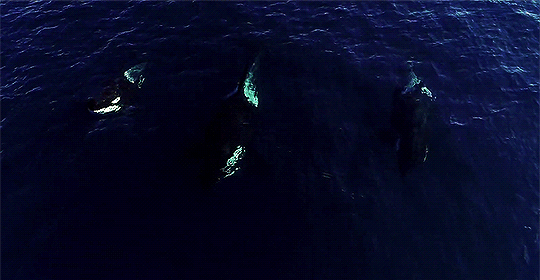



The social structure of Bigg’s killer whales differs from the tight-knit pod structure found in resident populations. Bigg’s killer whales tend to travel as a matriline—a female and her offspring. (DolphinDroneDom)
#killer whales#orcas#oceanedit#seaedit#bigg's killer whales#transient orcas#california transients#west coast transient orcas#CA51s#still trying to figure out the colouring on these#m: gifs#m: original
636 notes
·
View notes
Text

Finished T102 yesterday night. Can’t wait to finish the rest of the T101’s in this style. Need to pick up some new paint today as I’m missing a few colours i want.
#gouache#art#paint#watercolor#orca#whale#transient#biggs#killer whale#pnw#pacific ocean#britishcolumbia#west coast whales
3 notes
·
View notes
Photo
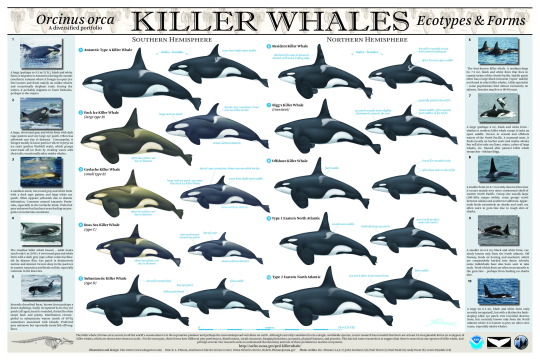
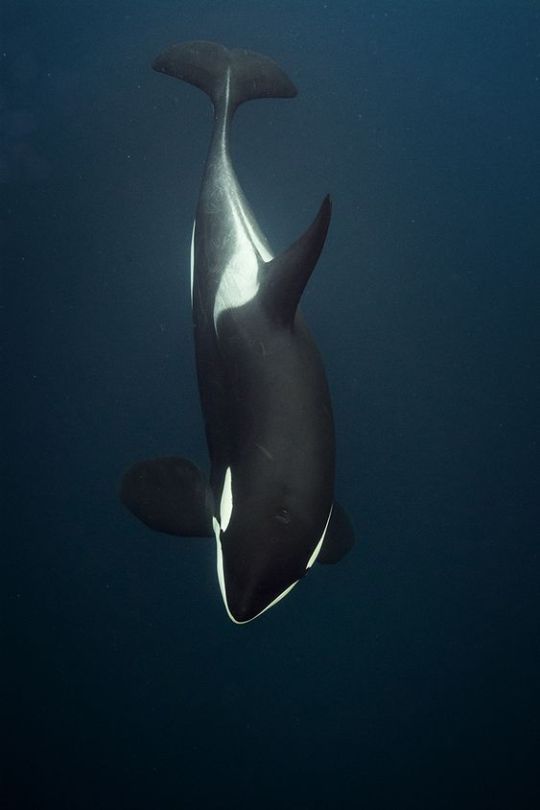

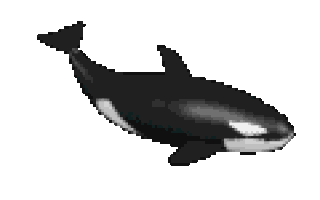

Killer whales that feast on seals and hunt in small packs are thriving while their widely beloved siblings are dying out.
illustration of an orca Melanie Lambrick Story by Katharine Gammon
On a warm September afternoon, on San Juan Island off the northwestern coast of Washington State, I boarded J2, a sleek black-and-white whale-watching vessel. The boat was named after a locally famous orca, or killer whale, affectionately known as “Granny.” Until her disappearance in 2016, Granny was the matriarch of J-pod, one of the three resident orca groups, or pods, that live in the surrounding Salish Sea.
For what some experts think was more than a hundred years, Granny returned to these waters every summer, birthing babies and watching them grow. She taught her daughters and sons to hunt Chinook salmon, leading them to where the fish were fat and plentiful. She celebrated births and salmon feasts with other families in her clan, sometimes with as many as five generations side by side. She lived through the decades when humans captured her kin, and through the transformation of the local islands from rocky farms to wealthy urban escapes.
As the boat that bears Granny’s name slowed to cruise under the giant bridges connecting the evergreen-lined shores of the Fidalgo and Whidbey Islands, I heard the loud whoosh of breath exiting a blowhole. Soon, we saw the wet poufs of air erupting from the whales’ shiny black bodies, catching the sunlight. There were six orcas in all, a mother with five offspring ranging in age from one to 13. These whales aren’t members of J-pod or the other two resident orca pods that return to the Salish Sea every summer. They’re transients, showing up in the area only irregularly, and unlike the residents, they eat mostly marine mammals. Their names reflect the distinction: T37A, T37A1, T37A2, T37A3, T37A4, and T37A5. Unlike Granny and her giant group of salmon-eating family members, transient orcas travel in smaller packs and are known for their wily hunting abilities: They can tip a sheet of ice in order to catapult a seal into the sea, or take down a porpoise in midair.
The boat’s captain, Daven Hafey, paused to log the location in an app on his phone; whale-watching boats often record whale locations in order to aid biologists’ research. As we floated, the orca family cruised around a small cove a few hundred yards away. Their breath formed heart shapes as they exhaled.
Soon, they squeezed out of the narrow mouth of the cove and into the open water under the bridge. There, one spy-hopped in the air, poking its monochrome head straight up and looking around.
Suddenly, the whales disappeared, and a uniform ripple appeared on the water’s surface. A small seal was swimming near the rocky shoreline, and the orca family had used its massive collective bulk to send an underwater pressure wave racing toward it. A second ripple rose from the surface, and the seal, knocked off balance, disappeared. Very quickly, it was clear that the family had triumphed: Gulls circled overhead, eager to claim the bits of seal that the whales would leave behind.
This is the hunt, the daily fight of mammal-eating orcas. It’s a dance with these creatures, a constant balance of risk and reward—the more aggressive the prey, the more likely they are to be injured in the battle. While residents have to work together to hunt salmon, salmon don’t fight back. For the transients, Hafey said, every meal is a potential death match: “It’s as if every time you opened the fridge you had to have mortal combat with a turkey to get a sandwich.”
Granny and her kin are considered part of the same species as transient killer whales, Orcinus orca. But residents and transients have lived separate lives for at least a quarter-million years. They generally do their best to avoid each other, and they don’t even speak the same language—the patterns and sounds they use to communicate are completely different. Over time, each type has established cultural traditions that are passed from generation to generation. While transients’ small groups enable them to hunt more quietly and effectively, residents’ large extended families allow them to work together to locate and forage for fish. Biology isn’t destiny, but for orcas, food sources might be.
I grew up visiting these islands, and as I watched the transients hunt and snooze, I felt a sense of familiarity. Like the resident orcas I’d watched for years, the transients were massively intelligent, social creatures, skillfully making a living on a sunny afternoon. But the world these whales inhabit is quickly changing, and the old rules no longer apply. As the summer residents travel farther and farther, searching for the salmon they need, these once-scarce transients are rising to rule the Salish Sea.
In the summer of 2018, a resident orca named Tahlequah had a calf that was stillborn, or lived for a few minutes at most. Tahlequah carried her calf’s body through the water for more than two weeks, sometimes holding it in her mouth, sometimes nudging it along with her nose. She kept the small carcass afloat for some 1,000 miles, even as it began to disintegrate into strips of flesh.
Tahlequah’s story went viral, perhaps because her grief and desperation seemed so human. Kelley Balcomb-Bartok, who took a famous photograph of Tahlequah carrying her dead calf, told me the image spoke for itself: “That needed no messaging. It was a gut punch.”
Since the 1990s, the resident orcas have been the superstars of these islands—the most photographed, most studied, best-loved group of whales in the world. They have been featured in a movie (Free Willy); they have a museum dedicated to them; they have individual names and backstories; and they have fans who paint buses in their honor.
For many people, the relationship with the whales verges on the spiritual. “It’s hard to describe—it’s like meeting God,” said Balcomb-Bartok, who grew up on the islands and works in communications for whale-watching companies while compiling memoirs and sketches related to the orcas. “They’re so amazing and intelligent and powerful, and yet they are so gentle and so matriarchal and caring and compassionate. There is nothing quite like … the southern residents—the most playful and loving population that you’ll ever meet.”
But these island celebrities are slowly dying. Forty percent of the Chinook salmon runs that enter the Salish Sea are already extinct, and a large proportion of the rest are threatened or endangered. The fish that are still around are much smaller than their predecessors, forcing whales to work harder and swim more for their meals. The resident population now numbers only 74, down from 97 in 1996.
Meanwhile, the sea lion population on the West Coast, which was protected from hunting in the United States and Canada in the 1970s, has bounced back from near extinction and is close to its historic size. The mammal-eating transient orcas are thriving in part because of this boom: During the years that Tahlequah was believed to suffer a miscarriage and the death of her newborn calf, T37A birthed the five calves who now played by her side. The transient population, which in 2018 reached 349, grew at about 4 percent a year for most of the past decade, and is well on its way to replacing the residents as the dominant killer whale in the Salish Sea.
But many of the humans who love the orcas of the Salish Sea are ambivalent about the transients’ success. While the residents are well-known individuals, the transients are relative strangers. Even when they’re in the area, they’re harder to get to know, because their need for stealth means they surface less often. “There are people on whale-watching boats who are disappointed when they see transients and not residents,” Monika Wieland Shields, a biologist who runs the Orca Behavior Institute on San Juan Island, told me. “You’d think the general public would be interested—but there is this tangible phenomenon where they are disappointed by the transients.”
“We’re certainly getting to know the Ts,” says Mark Malleson, a Canadian whale-watching captain who has been contracting for Fisheries and Oceans Canada and collaborating with the Center for Whale Research as a research assistant since 2003. “Because they’re the new residents. The whale-watching industry was built on southern residents, and we just don’t see them much anymore.”
In the 1960s, unfounded rumors of killer whales’ ferocity and appetite for human flesh gained traction; fishers came to believe that orcas competed with them for salmon. Then, in 1964, the public got its first close look at the species. When the Vancouver Aquarium tried to capture and kill an orca for its specimen collection, it wounded a young orca instead, and the whale, dubbed “Moby Doll,” lived for a few months in Vancouver Harbor before dying from an infection. During its time in the bay, Moby Doll demonstrated just how intelligent and social orcas could be, and for some observers, a capitalistic light bulb went on: Orcas were good entertainment, and entertainment could make money.
Thus began the capture era, in which about 30 percent of the Salish Sea’s orcas—mostly residents, as they were more plentiful at the time—were swept up into captivity. In one particularly gruesome event near Whidbey Island, a floating pen was set up to separate orca mothers from their babies, as their piercing screams filled the air. “It was a sight and sound that would haunt the local residents forever,” Sandra Pollard, who wrote a book on the capture, said on the 50th anniversary of the event in August of last year. Pollard recounted one longtime resident whose children asked why the whales were crying.
By 1973, 48 whales had been captured and sold to aquariums around the world, and an additional 12 had died during the capture operations. In 1970, a young Canadian marine biologist named Michael Bigg was asked by the Canadian government to figure out how these captures were impacting killer whale populations. The next year, he created a census of whales that relied on sightings and soon after began to use photo identification to pinpoint individuals. Not everyone agreed with his methodology, but Bigg persisted. Armed with a budget from the Canadian government and considerable force of personality, he got to work—once even chartering a seaplane, landing near the whales, and persuading a fishing-boat captain to take him close enough to identify the animals. If he could photograph every whale in enough detail, he believed, he could begin to study them as individuals.
Bigg soon began mentoring a new generation of whale scientists, including Ken Balcomb, who now runs the Center for Whale Research in Friday Harbor, and John Ford, who was a graduate student under Bigg’s tutelage. Ford started a rigorous study of whale language, dropping hydrophones 40 feet into the water to document the dialects of different whale groups. He speculated that residents might tend to choose mates whose “accents” were different enough to signal a low risk of inbreeding. One of Ford’s students later did a genetic analysis that bore out this theory.
These researchers had also started to encounter scrappy little groups of whales living apart from the familiar large pods. There were fewer of them, and they had erratic, unpredictable movements. Bigg and his colleague Graeme Ellis called them “oddballs”—outcasts who didn’t fit in. They turned up in places the large pods didn’t go, and they would dive for long periods, twice as long as the other whales.
“It wasn’t clear what they were,” Ford, now retired as the head of the cetacean research program at Fisheries and Oceans Canada’s Pacific Biological Station, told me. “Mike felt they were possibly social outcasts from large groups, which is typical in social mammals, and that they were scratching out a living with low-profile behavior.” It was Bigg who started calling these scrappy outcasts “transients”—he thought they were in transit, moving like lone wolves through a pack’s territory. They had a pointier fin shape, and their gray saddle patches were large and often more scratched up than those of the residents. On a couple of occasions they were seen killing seals, though at the time it was thought that the residents ate seals, too.
When Ford started matching his hydrophone recordings with the photo surveys and eating profiles, he began to wonder if the transients were fundamentally different creatures. They were often quiet as they hunted, but when they shared prey they would break into a loud chattering, markedly different from the residents’ squeaks, whistles, and whines. After long days on the water, Bigg and Ford, along with other researchers, shared their thoughts and observations over the occasional beer, and gradually they concluded that the transients weren’t social outcasts but a distinct population with a different lifestyle.
In the late 1970s, the orca survey in Canada started to focus on the northern residents and transients, while Americans took up the work on the southern residents. Balcomb moved up to San Juan Island and began doing the survey with his team, which still counts and monitors the southern residents every year. Eventually, others began to take an interest in the summer residents beneath the waves: In 1986, a local car salesman got his captain’s license and started ferrying tourists out to see the resident orcas. Today, more than half a million people go whale watching around the islands every year.
Bigg was diagnosed with leukemia in the 1980s, but he continued to research and write until his final days. His ashes were spread in Johnstone Strait, British Columbia, where the whales are often seen. More than 30 orcas were present during the ceremony. “One whale in the group, G29, was seen with a new calf,” Ford said. Bigg had predicted that G29 would give birth to her first calf that year, so calf G46 was nicknamed “MB.” In Bigg’s honor, many scientists in recent years have begun to refer to transient whales as “Bigg’s killer whales.”
In 2005, when the southern resident orcas were listed under the U.S. Endangered Species Act, the population’s distinctive language, behavior, and habits were recognized as a unique culture. It was an unusual moment for the law to acknowledge that cultural diversity wasn’t limited to humans, and that it was worthy of protection in other species, too.
Last year on July 4th, the summer heat was finally beginning to warm the islands in earnest. Due to the coronavirus pandemic, none of the usual games or parades were going forward. And while the resident orcas had turned up on schedule, they weren’t acting like themselves.
There was no “superpod”—the giant annual party of all three southern resident groups—and the orcas weren’t lining up as they usually did to search for fish. “We are seeing much less in the way of traditional foraging, and a lot more traveling,” Monika Wieland Shields, the Orca Behavior Institute biologist, told me in July. “They are not staying here for long periods of time. They’ll come in, do one lap of their traditional circuit, and then move on. It’s almost like checking the fridge, checking the cupboard, and then they have got to go somewhere else to eat.”
Howard Garrett, who runs the Orca Network, a nonprofit organization that documents sightings of the whales, told me something similar: “They were scattered in 1-2-3s, very sporadic, no travel essentially, and no socializing except the mother-offspring group,” he said, behavior that could only be interpreted as the whales “searching every nook and cranny for a fish, each one of them looking for a crumb.”
The residents’ diet is more than 80 percent Chinook salmon, fish that just aren’t around much anymore. The Albion test fishery, which uses a gill net every day during the spring and summer to count fish coming from the Fraser River in British Columbia, caught a total of only 14 Chinook salmon from July 1 to July 12 last year. (In the same period of time in 1992, the fishery counted 384 Chinook salmon.) Without a reliable supply of fish, the resident orcas are beginning to behave more like transients. But, unlike the transients, they can’t just start eating squid, herring, or seals—they learn from birth that fish is their only food.
“They can’t change their diet,” Deborah Giles, an orca researcher with the University of Washington Center for Conservation Biology, told me. “Theoretically, they could, but I’m reluctant to say they will switch, because they have this deep, intense cultural direction from their moms not to eat that thing.” (By occupying different positions on the food chain, the residents and transients avoid competing with each other, lessening the likelihood of aggressive encounters.)
The transient orcas are changing their behavior as well, Shields told me. While they typically travel and hunt as small family units of three to five whales, she’s recently seen them traveling in groups of 20 to 40. The groups are almost like the resident superpods of years past, Shields said. Researchers have nicknamed them “T-parties.” “They’re definitely less focused on being stealthy and hunting,” Shields continued. It’s possible that mammal-eating orcas have such abundant food that they don’t need to spend as much time hunting—and can spend more time socializing.
While many tourists are entranced by the star power of the southern residents, others ask why we care so much about one type of orca when another is ready to take its place. “There are no other whales that are like them,” Giles said of the residents. “They are a unique tribe of beings that have been here for thousands of years in this region, foraging on abundant and fatty salmon. Because everything that is plaguing them is caused by humans, I feel that we have a deep responsibility to do everything we can to recover them. To preserve that uniqueness.”
In early September, the whale paparazzi were buzzing about a celebrity birth. Tahlequah, after losing her calf in 2018, had finally given birth to a healthy baby, and both whales and humans seemed to breathe a sigh of relief. A few days after the birth, the entire southern resident population formed in a superpod for the first time all year. Tahlequah and her new baby swam alongside the group; from nearby boats, tourists and researchers watched in awe.
Read: why killer whales (and humans) go through menopause
I called Darren Croft, a U.K.-based researcher with the Center for Whale Research, for a read on the event. He was both excited for the new calf and sad that he wasn’t in the Salish Sea to see it. “Also, one calf is not going to fix this population,” he said. “It’s certainly not a green light.”
Croft and his colleagues have shown that in the southern resident population, long-lived, post-reproductive females are important for the survival of offspring and grand-offspring. This “grandmother effect” is thought to be another distinctive feature of the population’s culture; only a handful of mammal societies are known to have female leaders—elephants are another example—and even fewer have leaders who have lived past their species’ equivalent of menopause.
Croft and others are beginning to learn more about transient orcas’ culture, trying to construct a map of the whales’ social networks. Part of the challenge is that while charting the residents’ lives—their births and deaths and movements—has been part of scientists’ work since the 1970s, the transients haven’t been studied to the same level.
While the residents’ sons and daughters stay with their moms for life, Croft said, both sexes of transient calves can disperse by the time they’re teenagers—presumably so the groups don’t get too big to hunt efficiently or to all share in the kill—or they may stay with their family group. There are still many open questions about the transients’ longevity and life history. Some recent observations are opening up new lines of research: A paper published this month describes how transients in the Salish Sea can intentionally strand themselves, hauling their bodies out on land, in order to hunt seals.
Many of the experts I spoke with fondly remembered the resident orcas splashing and playing before their precipitous decline. But some researchers are becoming fans of transient whales as well. The transients sharply increased their visits to the Salish Sea in 2017, and Shields told me it’s exciting to see those babies grow up. “We are getting to know them as they spend more time here,” she said. “It’s a learning curve: What is their history, and how can we help people connect to them?” But when I asked Shields and other researchers to name their favorite whale, not one named a transient.
One transient that has gained some individual notoriety is an all-gray whale who is a member of the T46B family. He is nicknamed “Tl’uk,” a word that means “moon” in the language of the Coast Salish Indigenous peoples of the Pacific Northwest. His color makes him appear white in the dark green of the water, and pictures of him have spread around the world. But his fame comes more from his appearance than his actions. As with so many transients, his life story has yet to be uncovered.
“It’s just very different,” Howard Garrett, of the Orca Network, said. “It’s sort of—instead of Cirque du Soleil, you get the traveling trapeze artist.” He quickly added that the transients are fascinating in many other ways. But, he said, “they don’t have that community-celebration feel when they’re around.”
Kelley Balcomb-Bartok, the naturalist who took the photo of Tahlequah and her dead calf, told me the notion of “good whales” and “bad whales” is ridiculous. So many of the qualities that people love in the residents are equally present in the mammal-eating orcas, he said: “The Bigg’s whales are playful: Once they hunt, they play. And they are family oriented. Their mothers still birth and carry them; they do it in just small matrilineal groups. They will mix and match. They will separate. If you go on one of those whale-watch boats, you’ll hear the naturalists talking about [Bigg’s whales] the same way we used to talk about the southern residents.”
The transients also face threats—boat traffic, toxicants in the waters—but nothing like the starvation that many experts see in the residents’ future. Humans have built dams and poured concrete into the estuary waters that salmon need to survive, but we have deliberately protected the seals and other pinnipeds that supply mammal eaters with an endless seafood buffet. We have created the conditions that caused Tahlequah to lose her babies but enabled T37A to birth five calves in 13 years.
In the Friday Harbor whale museum on San Juan Island, a small sign contrasts the feeding habits of transients and residents. The mammal eaters are said to be “attacking” their prey, while the fish eaters are merely “eating.” But no matter their culture, their goals are the same: to fill their bellies and have more babies. The whales don’t know that humans see one act of eating as more violent than the other.
The residents are speaking, loudly, to anyone who is listening. They are moving away from their summer homes, searching high and low for salmon they once found with ease. They are struggling to give birth, to keep their babies alive, to keep up with a rapidly shifting world. At the same time, the transients are quietly waiting to be heard.
Katharine Gammon
is a freelance science writer based in Santa Monica, California. This article is part of our Life Up Close project, which is supported by the HHMI Department of Science Education.
https://www.theatlantic.com/science/archive/2021/01/orcas-killer-whale-resident-transient/617862/?utm_source=pocket-newtab
Read: What the grieving orca tells us
Read: The lingering curse that’s killing killer whales
A Group of Orca Outcasts Is Now Dominating an Entire Sea
Killer whales that feast on seals and hunt in small packs are thriving while their widely beloved siblings are dying out. Katharine Gammon
17 notes
·
View notes
Photo

Credit © 🎞 ✅ @pnwprotectors 🖋 A curious colony of Stellar Sea lions watch carefully from their haul out... Did you know: Reductions in pinniped populations negatively impacts Bigg’s Orcas and their recent resurgence is directly correlated to the number of seals and sea lions. Harbour Seals compose 52% of Bigg’s Killer Whales’ diet, and Steller Sea Lions compose 13%. These two species alone make up 65% of the prey consumed by these orcas. Seals and sea lions are opportunistic predators that feed on other fish species, including Hake and Pacific Herring. Hake feed on juvenile salmon. A reduction in the number of pinnipeds could lead to an increase in the number of Hake, and fewer salmon. Pacific Herring compete with juvenile salmon. A reduction in the number of pinnipeds could lead to an increase in this salmon predator at salmon at a critical stage of their development. More prey = more Transients In the 1970s and 1980s, populations of prey species along the west coast of North America were low and as a result Bigg’s were very uncommon in coastal waters. Seal and sea lion populations were heavily decimated from culls that ended in 1970 . In the 1990s, pinniped populations rebounded and with healthy prey populations the Bigg’s orca population grew significantly. During the 20 years between 1990 and 2010 the known coastal population more than doubled from about 120 to 280 animals! Pinniped facts via: Jared Towers Marine Education Research Society Dr. Lance Barret Lennard #stellarsealions #pinnipeds #biggsarethebalance https://www.instagram.com/p/CAfdFQYABh9/?igshid=1q355g2mjvs69
2 notes
·
View notes
Photo

#Repost from the great @pnwprotectors @download.ins --- Let’s all send a letter to NOAA. 30k individual letters are far more powerful than a petition signed by 30k people. We need to STOP this. All Together. 📝Link in our profile to download a letter template to NOAA that you can print out and send via snail mail to: ✉️Jolie Harrison, Chief Permits and Conservation Division, Office of Protected Resources National Marine Fisheries Service 1315 East-West Highway Silver Spring, MD 20910 [email protected] •Here are some Navy training Facts: •72 Southern Resident Orcas and 294,715 marine mammal species in the Salish Sea will be impacted by Navy training and testing activities. •The Navy’s application for testing and training activities and NOAA’s proposed rule would allow for 51 instances of level B harassment affecting Southern Resident Orcas every year for the next seven years. •As the proposed rule notes, that means that 68% of the endangered Southern Resident orcas could be affected. •This is just the Southern Residents. In total, they estimate 149 killer whales impacted during training & 325 from testing. •Those numbers account for total from 4 different populations (Alaskan Residents, ENP Offshores, West Coast Transients/Bigg’s & Southern Residents •294,715 marine mammal species in the Salish Sea will be impacted in total. ‘Action is the antidote to despair.’ -Joanne Baez #srkw #southernresidentorcas #Jpod #blackfish #orcas #weprotectwhatwelove #nofishnoblackfish #nopipeline #getthefishfarmsout #racingextinction #extinctionrebellion https://www.instagram.com/p/CDC7oXghacx/?igshid=u9lctaqjcu4d
#repost#srkw#southernresidentorcas#jpod#blackfish#orcas#weprotectwhatwelove#nofishnoblackfish#nopipeline#getthefishfarmsout#racingextinction#extinctionrebellion
1 note
·
View note
Note
Hello suka! I‘m @roe-deer-link and want to asked you, What are the characteristics of a west coast transient orca? ^^ I will try to do exactly what you want!
OH SORRY I GOT TO THIS A LIL LATE, I'm about to be a HUGE nerd here lmao
So! Orcas are a super diverse and widespread species, which natually lead to orcas developing different hunting methods, dialects, and genetically distinct body structures. These different groups of orcas are called ecotypes! The exact number of ecotypes has been up for debate in the past, but in my research I found that there are generally 8-10 recognized ecotypes. One of these is called the Transient orca (or Bigg's orca) which lives in the northern pacific oceans, and this specific ecotype is my theriotype!
Transient orcas have a more pointed face than other ecotypes, and they have very distinct grey patches behind their dorsal fins called saddle patches! the distinct white patches behind all orca's eyes are also angles slightly downwards in this ecotype, as opposed to the resident orca which have eye patches that point upwards! I also identify as a female orca because females are (generally) smaller and more streamlined than males, and have more curved dorsal fins, which matches my shifts.
For pictures/references I highly recommend the blog @californiatransients or the Whale and Dolphin Conservation website!


#*excited clicks*#skua whistles#fins#i got way too into this#Also#if any of my info here is wrong please lmk!#I have been researching orcas for a very long time but that's unfortunate limited to googling stuff#If any info is outdated or I describe things wrong I would love to be corrected!
5 notes
·
View notes
Text
Rare white orca calf spotted off Washington coast, delighting whale watchers and researchers
A rare white orca calf has been spotted along the Washington coast, delighting whale watchers lucky enough to see him.
Tl’uk, whose name means “moon” in Coastal Salish, is already something of a local celebrity in north coastal Washington.
A rare white orca calf has been spotted along the Washington coast, delighting whale watchers lucky enough to see him.
He’s been spotted a handful of times in the Salish Sea by local whale watchers and cropped up again this weekend, Island Adventures Whale Watching lead naturalist Erin Gless told CNN.
Tiny Tl’uk was first spotted in November 2018, and he’s about a year old, she said. He’s not an albino whale — he’s more of a cloudy grey — but it’s still unusual for orcas to be anything but black and white, a tool they use to camouflage themselves while stalking prey.
Gless said she’s not sure how Tl’uk got his coloring. It worried researchers who first thought it signaled his health was declining. But nearly one year later, he’s growing and packing on pounds — all signs he’s in good health.
Tl’uk is a Bigg’s killer whale, a transient type of orca that hunts seals and sea lions up and down the West coast.
Washington’s resident orcas that feast exclusively on salmon are having less luck–the fish’s numbers have significantly declined, and as its prey shrinks, so do orca populations in the Pacific Northwest.
Southern resident killer whales are considered endangered, according to the National Oceanic and Atmospheric Administration.
Beyond their shrinking prey, they’re vulnerable to toxic chemicals like PCBs, noise pollution that interferes with their communication and oil spills, particularly the 1989 Exxon Valdez incident.
from FOX 4 Kansas City WDAF-TV | News, Weather, Sports https://fox4kc.com/2019/10/14/rare-white-orca-calf-spotted-off-washington-coast-delighting-whale-watchers-and-researchers/
from Kansas City Happenings https://kansascityhappenings.wordpress.com/2019/10/14/rare-white-orca-calf-spotted-off-washington-coast-delighting-whale-watchers-and-researchers/
0 notes
Link
Anacortes
10 AM
It was a spectacular day to be heading out into the Salish sea, with blue skies all around and a warm breeze dancing through the air. We headed west in Guemes channel and south in Rosario strait making our first stop at Colville island. Here we found a nice group of harbor seals warming up on the rocks, as well as, a few out fishing in the bull kelp. A little further along the island, an adult bald eagle was perched on the rocks staring off to the west. We continued west from there and Captain Carl discovered a minke whale just west of Iceberg point on the south side of Lopez island. We got in a few great looks as the minke whale was devouring the local bait balls that were forming up. After a few great looks the minke actually began moving off and out of nowhere a humpback showed up. It turned out to be MMX0006 and was attempting to feed on many of the same bait fish the minke was taking advantage of. We got a lazy fluke and after that we knew it was time to travel on and find some more wild life. We headed along the coast of San Juan island to the shores of Stuart and joined up with The fish eating orcas known as Jpod. They were foraging along the island and a few younger animals in the group were getting a little playful. We got a great spy hop and even a couple lazy breaches from some of the teens in the pod which was super awesome to see. From there we waved goodbye to Jpod and headed north around Stuart island and joined the T36A’s just off Point Disney on Waldron island. They headed over to a small wildlife refuge known as white rocks and began hunting the many harbor seals that surrounded the area. We then waved goodbye to the Biggs orcas and began to make our way back through the heart of the San Juan islands. It was an amazing trip full of whales and wildlife and some of the best weather this month has seen!!!
4 PM
This afternoon the warm weather poured into the area as we made our way west toward Thatcher pass. We made our first stop at Pointer island where we found a nice group of harbor seals warming up in the afternoon sun. From there we cruised through the inner islands and made another slow down at Pole pass where we found all sorts of sea birds hanging out and of course more gorgeous views of the San Juan islands. We headed further west from there and joined the T36A’s near Skipjack island just north of Waldron. We got some amazing views and for a brief instance the orcas gave some thought of going on the hunt. T36A(mom) however had other plans involving nap time and after some amazing looks at the orcas it seemed as though they slipped into a resting pattern. Having already spent an amazing time with these orcas we decided to continue on to see what else we could find. At Sucia island we found a couple of adult bald eagles and had great looks at an active nest before pushing over to Clements reef. Here we found a nice big group of Steller sea lions, hanging out on the last bit of rock still poking out of the water. From there we continued south, winding in and out of the outer islands before heading over to Lummy rocks. When we neared the rocks we found a few harbor seals feeding on some fish and doing their best to horde it away from the gulls that were coming in. After a fun little show we continued on around the back side of Guemes island and made our way back to Anacortes having completed another great day on the water!!!
Port Angeles
What a beautiful day it was with blue skies and the Olympics in full view. Our harbor seal gang was hauled out on the end of Ediz Hook as we started our journey. We started out heading northwest and as we passed the Elwha Valley we saw an exhalation of a humpback. We headed over to check him out and found a sleepy traveling humpback heading eastward. We stayed with him for a bit but he never fluked so we never were able to ID him. A few miles to the north of us a pod of transient orcas were just found and we made our way over to see them. By the time we got there they had been down for 8 minutes and were being hard to keep track of. All the whale watch boats were spread out looking for them to resurface and they were spotted once and then did a magic disappearing act on everyone. We stayed for a bit continueing the search to no avail. Another humpback was not far away so we checked him out and found our friend MMX0167 Stitch heading southwest at a good clip. We had some nice flukings from him. He then took a really long down dive and finally when he reappeared he surfaced right next to the boat thrilling everyone. We could see him under water as he swam next to the boat and then passed in front of the bow and out beyond us What a cool encounter. After that we let him continue on in his journey and we made our way over to Race Rocks. Harbor seals were sleeping in the kelp despite all the noise from the California and steller sea lions arguing. We started our journey back to Port Angeles keeping an eye out for any whales along the way but we had a quiet trip back to the harbor.
0 notes
Text
September 10, 2021: Transients- Table Rock

T122, T046, T046E




T046F, T046D, T122

T046F




T046E, T046, T122, T046F, T007B4

T046E












T046E with a Humpback

T046D





T046


T007B4 and T046E

Photo Credit to the Center for Whale Research Encounter #69 (Sequence #2) - Sept 10, 2021
#T122#T046#T046E#T046F#T046D#T007B4#transients#transient killer whales#Transient orcas#biggs killer whales#West Coast Transients (Biggs)
45 notes
·
View notes
Photo

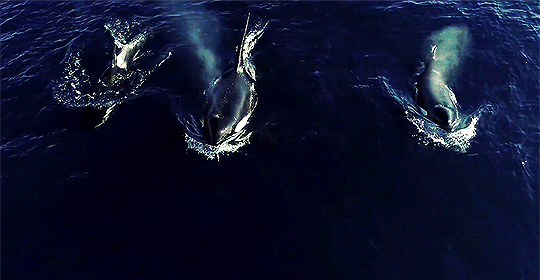

CA51s transient orcas off of the California coast. Because they hunt mammals, the optimal number of whales in one group is about 3-7 individuals. This structure allows them to effectively hunt while keeping detection by their prey to a minimum. (DolphinDroneDom)
#orcas#killer whales#oceanedit#seaedit#bigg's killer whales#transient orcas#california transients#west coast transient orcas#CA51s#don't know them enough to guess at IDs#m: gifs#m: original
118 notes
·
View notes
Text
April 10, 2022: Transients- West of Constance Bank
T172


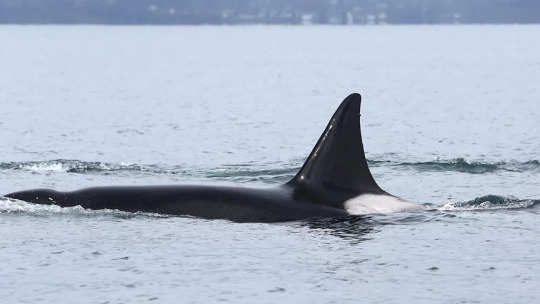
T117B


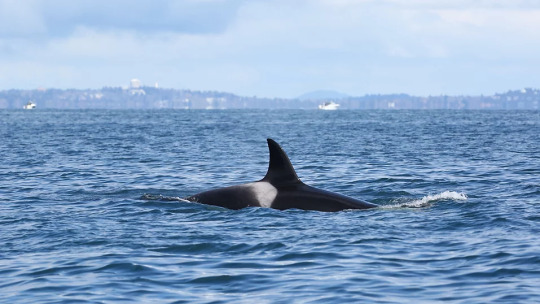

T049C
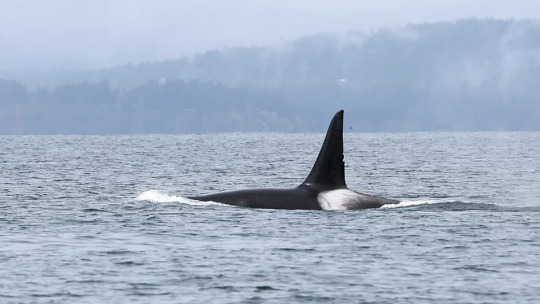
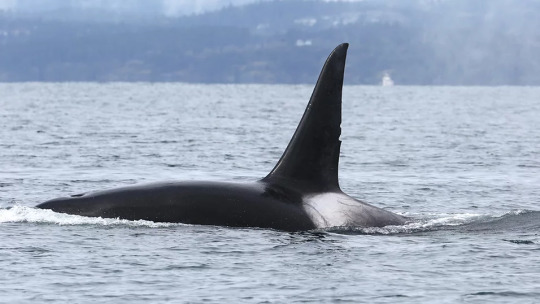
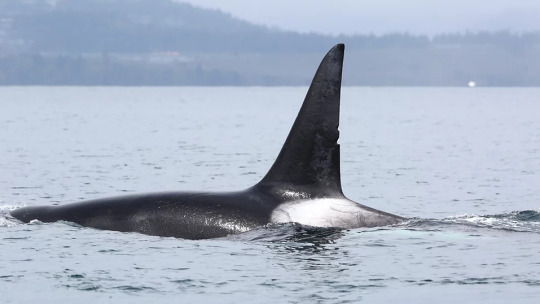
T030B2
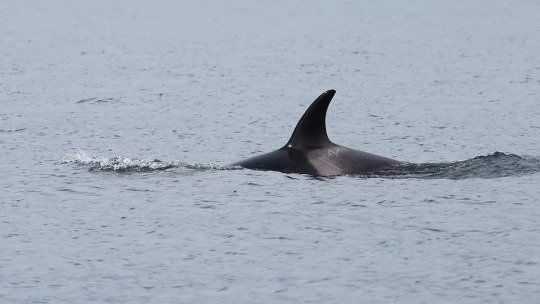
T030B1 and T030B2

T030B1

T030B
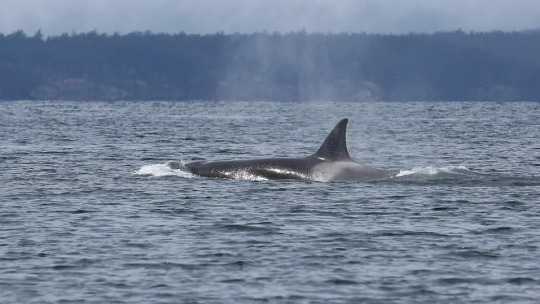

Photo Credit to the Center for Whale Research Encounter #15 - April 10, 2022
#T172#T117B#T049C#T030B2#T030B1#transients#Transient orcas#transient killer whales#west coast transients#biggs killer whales#West Coast Transients (Biggs)
8 notes
·
View notes
Text
April 28, 2022: Transients- Haro Strait

T049A3 and T049A6

T065B1 and T065B
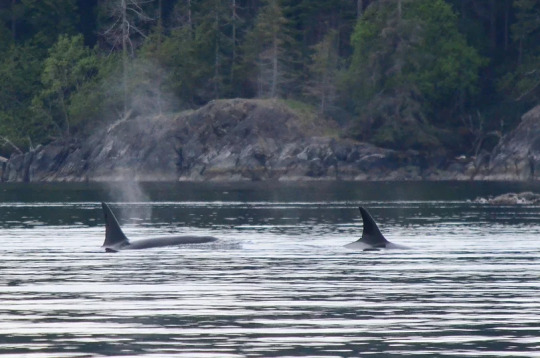
T049A3 and T049A4

T065B1

T049A3
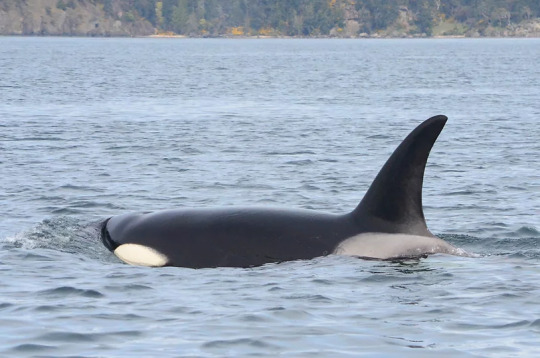
T049A4 and T049A6

T065B
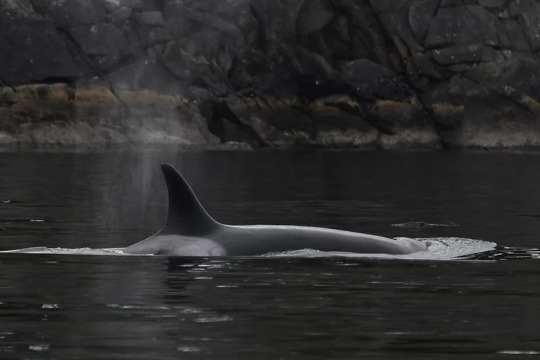
T049A and T049A6

T049A and T049A5

T049A and T049A3
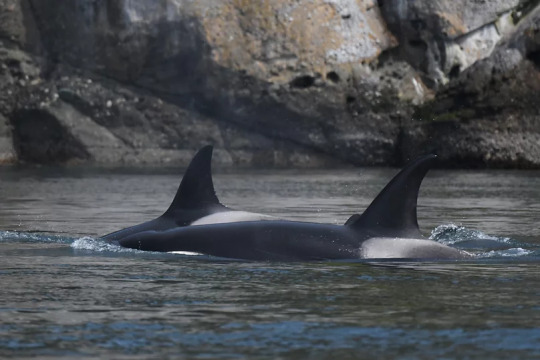
T049A3 and T049A5

Photo Credit to the Center for Whale Research Encounter #19 - April 28, 2022
#T049A3#T049A6#T065B1#T065B#T049A4#T049A#T049A5#transients#west coast transients#Transient orcas#transient killer whales#biggs killer whales#West Coast Transients (Biggs)
6 notes
·
View notes